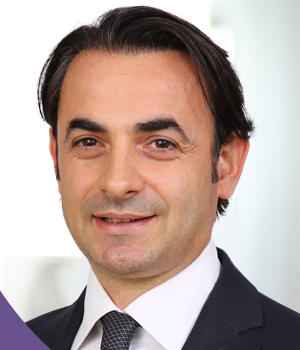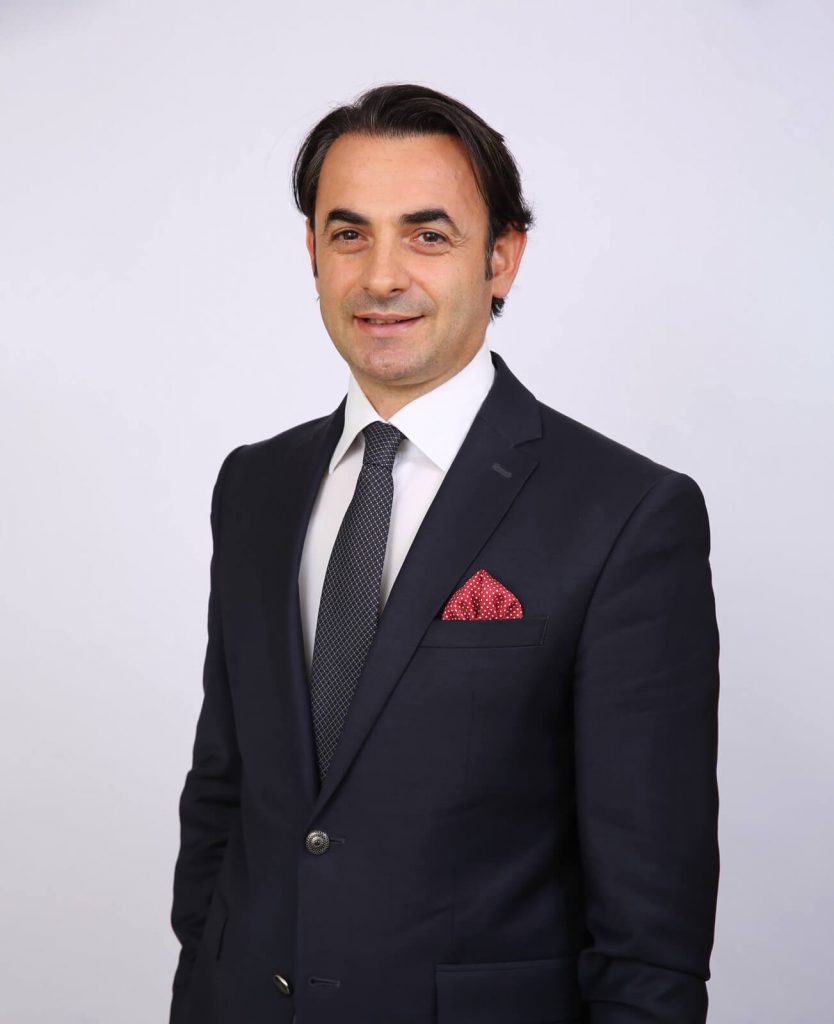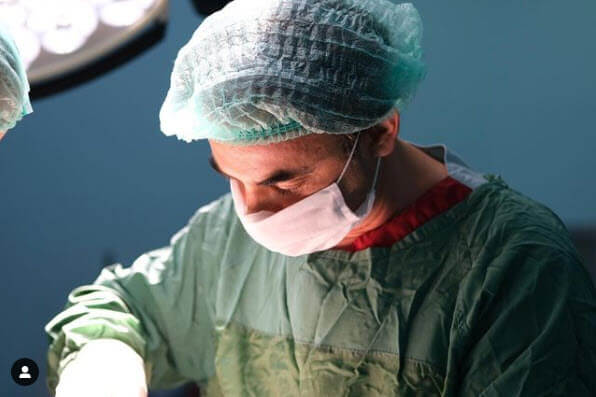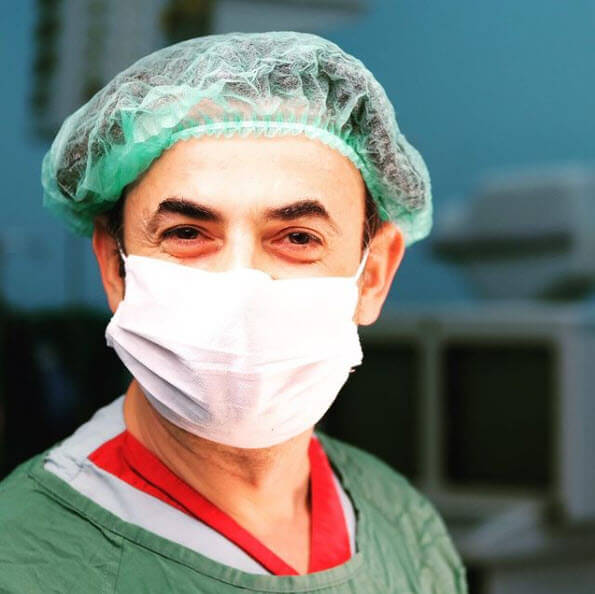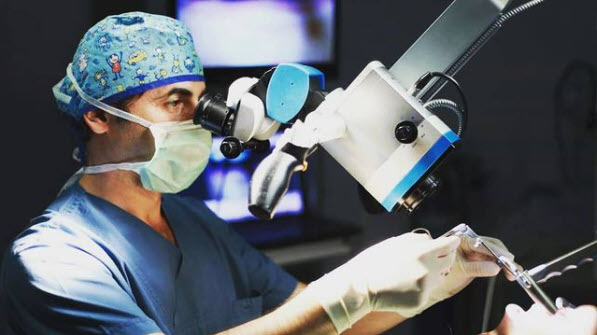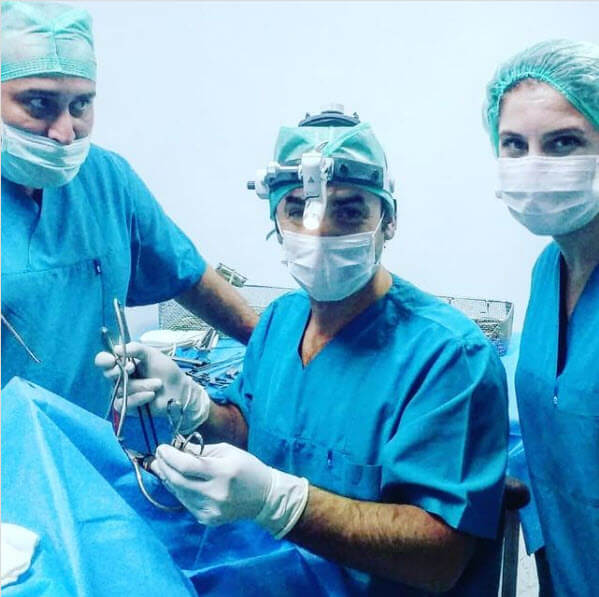Prof. Dr. Kurshat Yelken
Prof. Dr. Kurshat Yelken - vocal cord restoration
Knots and pips
Nodules and polyps are the most common benign growths that occur in the middle part of the vocal cords. Nodules are horny structures formed on the vocal cords. Polyps are fluid-filled growths. They can be fed by invisible blood vessels. Hoarse voice and fatigue are typical symptoms in both nodules and polyps. Both nodule and polyp occur due to vocal cord trauma that occurs during speaking or singing. Factors such as smoking and alcohol use, caffeine, allergies, reflux, exposure to harmful chemicals are also effective in the formation of nodules and polyps. Voice therapy is the first step in treatment, in addition to hygiene recommendations. In more severe cases, surgical methods are used.
Brushes
Cysts in the vocal cords are the same as cysts that occur anywhere in the body. They are in the form of sacs filled with fluid. Unilateral cysts are seen in the middle part of the vocal cords, where they vibrate the most. The true cause of vocal cord cysts is unknown. Treatment is by surgical method. After the surgical intervention, voice therapy is administered.
Polypoid degeneration
Polypoid degeneration, also known as Reinke's edema, has a different appearance from polyps. Polyps are individual lesions seen unilaterally or bilaterally in the middle region of the vocal cords. Polypoid degeneration is a balloon-shaped swelling along the vocal cords. It is a sign of extremely low tone (especially in females).
It occurs in people who use excessive voice and who smoke or have gastric reflux. In addition, excessive alcohol use is an important factor in the formation of polypoid degeneration.
Treatment is done according to the needs of the patient and the severity of the problem. If the swelling is at a level to block the airway, then surgical intervention is necessary. If the swelling is mild, then voice therapy is preferred first. Voice therapy is sufficient to relieve the swelling and reduce the symptoms.
Muscle tension - Dysphonia
Dysphonia is the feeling of fatigue and discomfort in the voice resulting from overuse of one or more muscles. Although it occurs mostly alone, in some cases it may also be accompanied by organic problems. During phonation, the vocal cords do not unite, especially posteriorly. For many women, lack of full closure in the back is common. In some cases, the pseudo-vocal cords are also observed to be overactive during voice production. The cause of dysphonia is overactivity in the laryngeal muscles.
Voice therapy is the preferred method of treating dysphonia. Different approaches can be used. Laryngeal massage is one of the effective methods.
Sulcus Vokalis
The dictionary meaning of sulcus is furrow. It can be said that the vocal cord sulcus is the furrow seen along the vocal cord tissue. The physiological groove is a shallow groove that extends from the front to the back of the vocal cord. And in many people, it does not cause vocal damage. The sulcus pocket is a deeper groove and can give some signs of vocal damage. The main sulcus vocalis is a deep groove in the vocal cord tissue descending down to the muscle tissue. It causes severe vocal damage. Symptoms of sulcus vocalis are weakness, fatigue and a high or veiled voice.
Debate continues as to the cause of the vocal cord groove. In some cases it is seen when a cyst has been removed. In other cases it may be congenital.
Although voice therapy helps to eliminate some symptoms, it does not eliminate them completely. In such cases, surgical intervention may be necessary. The surgical method to be applied varies according to the type of groove also. As a result of surgical intervention, symptoms may be completely eliminated and partial improvement may be seen.
Vocal paralysis
Vocal cord paralysis is a condition in which one or more nerves leading to the vocal cords work weakly and the vocal cords cannot move or return to their normal position. In many cases, the vocal cords cannot be closed completely or at all. At the same time, the vocal cords cannot extend properly to produce a high pitched sound. Very rarely, it is noticed that the vocal cords do not open. In this case, the patient's breathing becomes difficult.
The cause of vocal cord paralysis can be due to many things. The most common cause is viral: The patient suffers from influenza or upper respiratory tract infection and, accordingly, laryngitis and does not return to normal. Other causes are surgical interventions (chest, neck or shoulder), heart problems and rarely damage from a tumour or brain damage.
Before planning the treatment of vocal cord paralysis, it is necessary to establish the cause of vocal cord paralysis. If the paralysis developed after a respiratory infection or if the cause cannot be detected, it is probably viral. The laryngeal electromyography test is performed to find out whether the vocal cord paralysis is new or old. Treatment is planned according to the findings obtained. If the patient has breathing problems, surgical intervention is needed to open the airway. In some cases, the "wait and see" method is preferred, especially if the symptoms are not severe. Voice therapy is performed to increase the quality of vocal cord closure with vocal function exercises, strengthening exercises, resonant sound therapy, accent method, Lee Silvermann vocal therapy programs.
Spasmodic dysphonia
Spasmodic dysphonia is a type of "focal dystonia". Basically, focal dystonia is a condition that consists of abnormal movements in an isolated part of the body, especially during a voluntary act such as speaking. While sound in dysphonia is affected, autonomic functions such as coughing, laughing and even singing may be normal. Spasmodic dysphonia is divided into two types. The most common type is adductor dysphonia. It causes the vocal cords to stop suddenly at different times during speech. In abductor dysphonia, on the other hand, the vocal cords cannot join and close and gives the impression that the "sound has receded".
It is not known what causes spasmodic dysphonia. In some cases, however, the cause is related to a small nerve or to the brain and cannot be attributed to any disorder. This unusual situation does not cause any problems other than with speech. It is thought to occur as a response to stimulation of the vocal cord nerves.
Rarely, spasmodic dysphonia or at least conditions like it can also develop due to stress.
The main method of treating spasmodic dysphonia is to inject a small amount of "botulinum toxin" (Botox) into the single or double vocal cords or the muscles near them. Thanks to these injections, the treated vocal cord is weakened and contractions are reduced. The effect of the injection lasts 3-5 months. When the effect begins to weaken, the contractions start again. A limited number of voice therapy sessions attempts to reduce the strong vocal cord closure and make the effect of Botox last longer. Safe voice therapy and yawn therapy are the methods used in voice therapy sessions.
When conditions such as spasmodic dysphonia are associated with stress, voice therapy is preferred for treatment. In such cases, stretching and relaxation techniques are used.
Hemorrhage - Bleeding into the vocal cord tissue
Small venous cracks sometimes lead to weak, invisible varicose veins. One cause of hemorrhage in the vocal cords is excessive loud use of sounds, such as shouting. Abuse of sound can cause vocal cord veins to rupture. Sometimes invisible vessels nourish and support the vocal cord lesions. This condition is seen in polyps and some cancerous growths.
The treatment of a vocal cord haemorrhage varies depending on the reason why it occurs. If the bleeding is new and widespread, a few days or a few weeks of complete vocal rest is one of the options to use in treatment. In Europe and the US, drug therapy for blood absorption is also regulated. Patients should not use blood thinners and alcohol. In cases where the blood vessels are bulging or the lesion is cancerous or benign, surgical intervention is performed to remove the lesion and cauterize the blood vessels.
Closure of the vocal cords
The curved vocal cords resemble two springs connected front and back. The front and back of the vocal cords are united; but the middle part of the vocal cords is open. The symptoms are a weak voice and fatigue.
The main cause of this condition is the aging of the larynx. However, it can also be seen in young patients. In some cases, it is caused by hidden nerve damage. As a result, the vocal cords are prevented from closing along the midline and weakness is seen in the muscle, leading to vocal cord closure over time. The cause of the curvature, especially in young people, is thought to be overuse of the muscle.
The first preferred method of treatment is voice therapy. The goal is to remove the vocal cords and provide the best closure during phonation. Due to incomplete vocal cord closure with therapy, the use of other muscle groups used to compensate for the situation is reduced. Vocal function exercises, pushing exercises, Lee Silverman sound therapy, resonance sound therapy, or accent method (2nd part) are sound therapy methods that can be used. In cases where the condition is severe or the patient's cognitive level is not sufficient, a substance can be injected into the vocal cords and they can be inflated to occlude them.
Granulomas
Granulomas are vascular tissues that occur in the larynx. They are found mostly in the back of the vocal cords in the area called the vocal process. In some cases, ulcerated tissue appears in the vocal process of the other vocal cord in response to the unilateral granuloma. We can compare this situation to harmony.
Many granulomas are caused by stomach acid irritating the back of the larynx. In addition, granulomas can occur during insertion of a tube into the airway during surgery and due to diseases such as tuberculosis or HIV+ if the tube is stuck in the airway for a long time after surgery. It is also thought that low pitch sound production and excessive use of the posterior larynx cause granuloma.
Closure of the vocal cords
Treatment of gastric reflux represents the most important part of treatment, even if the patient is unsure of such a history. A list of medications and diets are used in this treatment. If the lesion is too large and does not respond to medication, microsurgery or voice therapy or both may be performed. Because granulomas can recur, treatment should be multifaceted to reduce factors that cause recurrence (continuing gastric reflux therapy, changing voice use habits).
Problems with the transgender voice
Transgender voice problems arise as a result of a person's desire to transition from their biological sex (male or female) to the opposite sex. Such problems arise when individuals who are biologically male want to look like a woman.
Transgender voice problems arise from differences in male and female voice production systems, mismatched biological abilities and social proclivities. Cultural characteristics require that the voice rise and fall and that language be gender specific.
Voice therapy for transgender requires behavioral, medical, and surgical interventions. The behavioral approach includes voice and speech therapy and forms an important part of the treatment process. The medical approach sometimes includes hormone therapy to manage gender reassignment. The success of voice surgical interventions is variable. Sometimes distinct changes in sound are seen, sometimes not. Voice therapy is an important key to enhancing the effects of surgical intervention.

